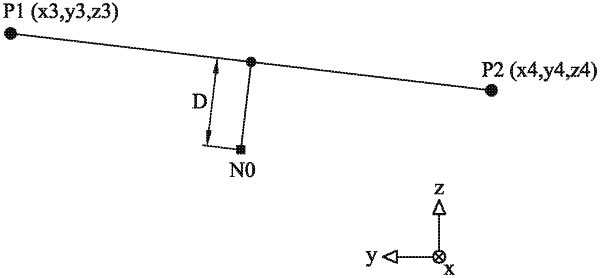|
1. A method for analyzing an overcutting defect of a machining process, adapted to be executed by a machining path planning device, and the method comprising: executing a machining code to generate a cutting face, wherein the cutting face comprises a plurality of machining paths; selecting one of the plurality of machining paths as a specified machining path and setting a specified node on the specified machining path; calculating a path vector and a tangent vector passing through the specified node according to the specified machining path and the specified node; calculating a sectional plane passing through the specified node according to the path vector, the tangent vector, and the specified node, wherein the path vector is a normal vector of the sectional plane, and the tangent vector and the sectional plane are not coplanar; obtaining a plurality of intersection points between the sectional plane and the other machining paths which are different from the specified machining path; designating two of the intersection points as a first adjacent intersection point a second adjacent intersection point, wherein the first adjacent intersection point and the second adjacent intersection point are respectively located on opposite sides of the specified node; obtaining a connection line, wherein the connection line is a line connecting the first adjacent intersection point and the second adjacent intersection point; and calculating a distance between the specified node and the connection line and defining the distance as an overcutting amount of the specified node, wherein calculating the sectional plane passing through the specified node according to the path vector, the tangent vector, and the specified node comprises: setting a first reference node and a second reference node on the specified machining path; and obtaining the path vector according to the first reference node and the second reference node.
|
